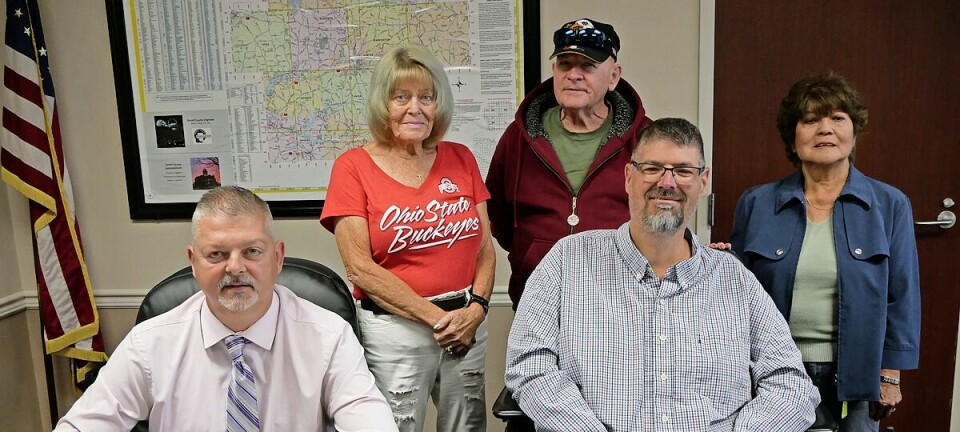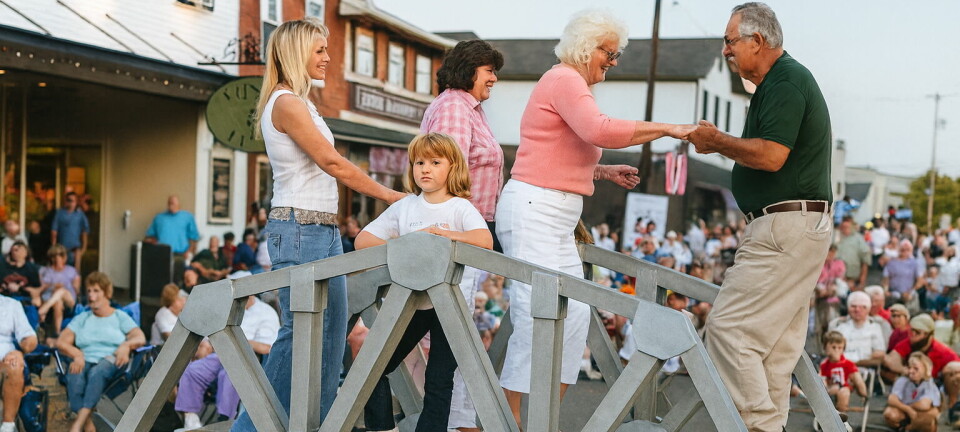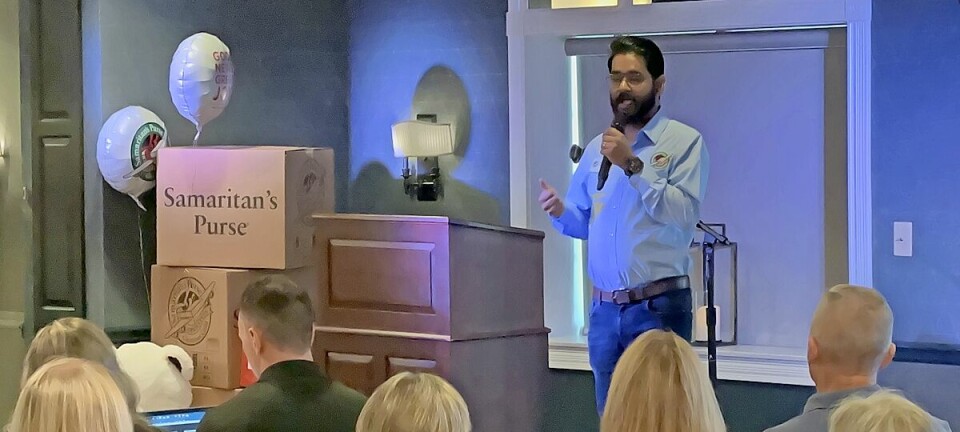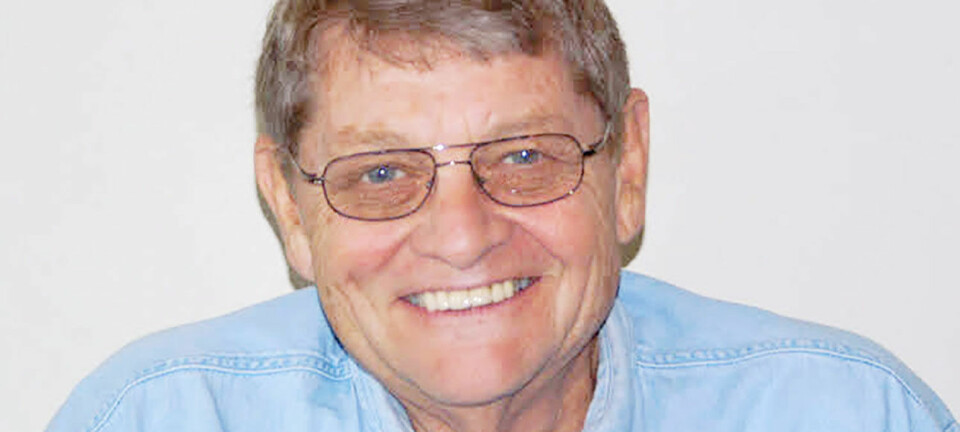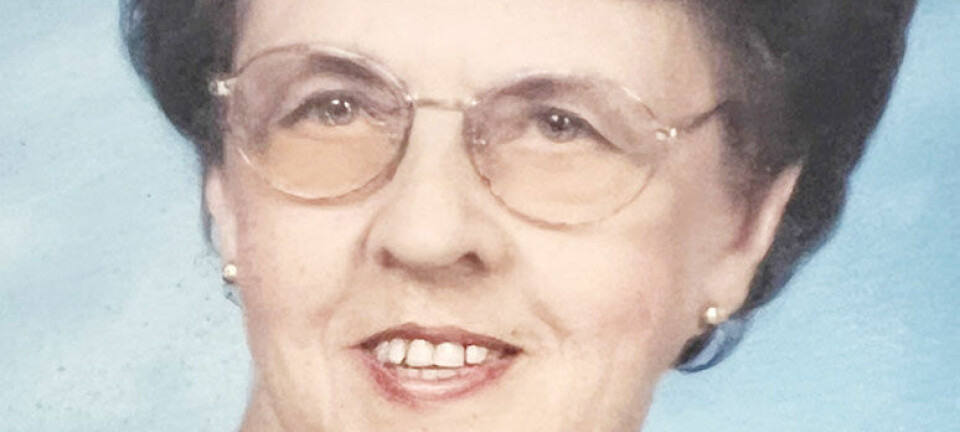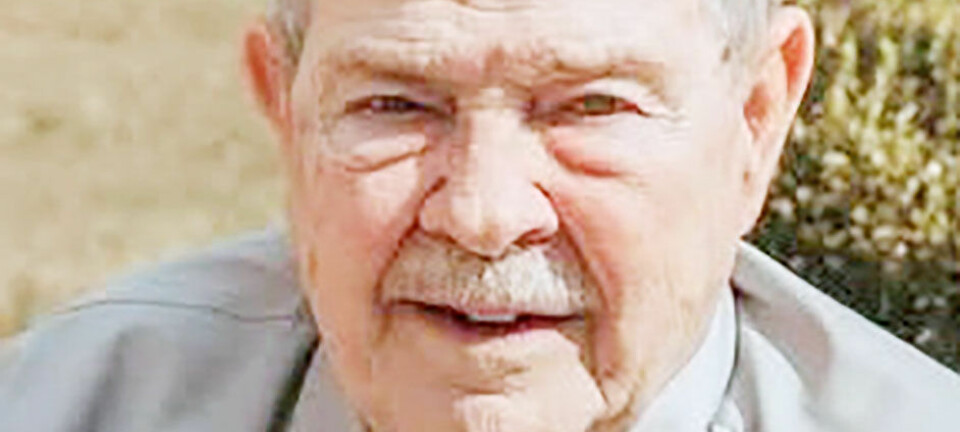Holmes County Historical Society digs its newest presentation

While it wasn’t a Sunday morning, the Killbuck United Methodist Church was a packed house the evening of Tuesday, July 20 when a pair of professors from Kent State University traveled to Holmes County to highlight a presentation on the recently discovered TSJ Indian dwelling found in Southern Holmes County.
The TSJ site has already proven to be a monumental find, and the building excitement of what will continue to be discovered at the site has many archaeologists excited about the knowledge it could present on this area’s history.
The site revealed more than 600 stone tool relics from Late Archaic to Early Woodland eras. It also provided insight into the type of dwelling area local Indians would have used during their time in the area. All of this was gleaned from the site, despite it having not even been excavated yet.
Presenting the information to the packed house were Dr. Michelle Rae Bebber, assistant professor of the department of anthropology at KSU, and Dr. Metin Eren, associate professor at KSU and a research associate at the Cleveland Museum of Natural History.
Both experts provided insight into the new find, expressing their desire to monitor the progress as the site is revealed more in-depth.
“This is an absolute treat for us to talk about a site we are still analyzing and exploring,” Eren said.
Eren said the stone forms they found included cores from which Indians made stone flakes, preforms, stones that were tools just half-way finished and projectile points, and Eren said the reason the camp was believed to be Archaic Period rather than Clovis was the lack of pottery found.
The Archaic Period, which included Early, Middle and Later periods, was from 8,000 to 1,000 B.C. and produced the first pottery in North America. Stone rocker knives, Steatite stone bowls, birch bark containers and grinding stones are all a part of the find.
In addition to speaking, Eren exhibited his flintknapping skills, showing how he makes arrowheads and describing how Indians would have created and utilized tools thousands of years ago.
The two professors believe this was a base camp site, a larger more spread-out area that would lead them to believe this was a gathering place where Indians would have stayed for longer periods of time rather than simply passing through.
The presentations by the two professors were followed by a Q-and-A session in which there were plenty of inquiring minds wanting to learn more about the local site.
Mark Boley, executive director of the Holmes County Historical Society, said the presentation exceeded his wildest dreams and was incredibly informative and well received.
“Whenever our program committee gets wind of something, they do a great job of running with it and create something exciting,” Boley said. “We are so excited to see such an incredible turnout, and our presenters were really impressive.”
According to Melissa Patrick of the Holmes County Historical Society, this find is special, and creating an opportunity to have those interested in hearing more about it was too exciting to pass up.
She said once they were alerted to the find, the HCHS board met via Zoom in January to set something up. Once the paper on the find was published, she contacted KSU and was able to put together the logistics to make the event happen.
While the actual destination of the find is a secret, Patrick said the party who initially discovered it was looking for something else and happened to stumble upon it.
It then became a waiting game for the report to be filed, and she told Boley it was time to put a featured evening program showcasing the find together.
For Patrick, the hard part was waiting for the event to take place as they waited out the pandemic.
“As is the case in history, everything is a process,” said Patrick, who in the meantime helped create the Holmes County Courthouse program that recently took place. “We all knew this was going to be something special that a lot of people here locally would be excited to learn more about.”
She said the reason they chose to feature the program in Killbuck was because the Killbuck Valley Museum also features some artifacts from that same time period.
“We wanted people to have close access to the museum following the presentation,” Patrick said. “So many people don’t know what a great museum we have in our county here in Killbuck.”
According to the two professors, there will be further investigation into the TSJ site in the future when more experts will visit Holmes County to explore the many important historical secrets the site will reveal as they unearth more about the history of the Indians who dwelt there.
The two professors said there was a discovery site located near Mt. Vernon that has led to some incredible insight. That site, which is believed to be from the Clovis Period, was considered a huge find by archaeologists, and it yielded far fewer finds than the Holmes County site has already presented.
“The Mt. Vernon Nelson Cache that was found in 2008 has made international news, and this site has every chance to be just as exciting as that one,” Bebber said. “What we did thus far was just a surface survey, but that told us there is definitely something worth checking out if we excavate, because what we found, we found in just about an hour. So that is a very rich site, and we are extremely excited about the possibilities.”
What this site divulges about this area’s history is yet to unfold, but the TSJ site has the archaeological world and those involved with local history buzzing about the valuable cache of information that could be told in the future.



